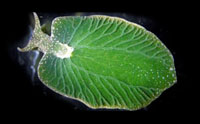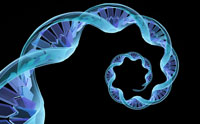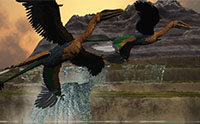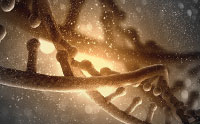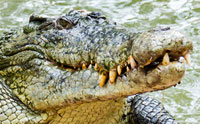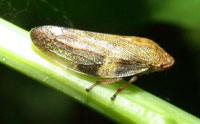Solar power may still be a relatively new technology for humans, but certain sea slugs can already capture solar energy from algae in a complex process that defies evolutionary predictions. More… …read more Read more here: icr.org
“Just one more of many marvels of design in nature.” Admin The humble fly hovering over a garbage can is routinely capable of some high-speed aeronautic manoeuvres that have long boggled the minds of aircraft designers and engineers. If a male fly chasing a potential mate sees her change course ever so slightly, he will respond with an appropriate change of his own in just 30 milliseconds! It has long been known that the amazing stability of flies as they zip around has a lot to do with the two tiny club-shaped ‘balancing organs’ they have, called halteres (see Figure [More]
Did you know that a starfish is not a fish, and a sea lily is not a plant? …read more Read more here: creation.com
Does the chimpanzee ability to see-a-snake and sound-a-signal recapitulate the evolutionary underpinnings of human language? …read more Read more here: AIG Daily
Australopithecus afarensis newest reconstruction drags Lucy down-to-earth. …read more Read more here: AIG Daily
The fearsome piranha’s vegetarian version uses its teeth to shred plants, not meat. …read more Read more here: AIG Daily
Welwitschia is a living fossil, meaning that when it is compared with fossil Welwitschia from the lower Cretaceous (last dinosaur) period, it has not changed any. …read more Read more here: AIG Daily
Evolutionists who linked human brain size to intelligence have had to change their story. …read more Read more here: creation.com
Over the past three years, ICR News has featured over 20 cases of original soft tissues found in fossilized remains around the world.1 Since tissues like skin and cartilage are known to spontaneously decay in only thousands of years, these published finds clearly show that the fossils could not be millions of years old. Careful chemical analyses published in peer-reviewed journals concluded that original tissues—most often protein that had not mineralized—came from the buried animals’ carcasses. But many of these studies relied on only a few different detection methods. Now, a team of researchers using special equipment at the MAX-lab [More]
Why are spider webs so strong? Because silk can respond differently to different stresses, and sacrifice a few threads to preserve the whole web. …read more Read more here: creation.com
“Another layer of the DNA onion is peeled back to reveal .. another layer. You would think evolutionists would finally “get it” after seeing layer upon layer of incredible complexity revealed that it would be impossible for all of this to have come about by chance but apparently not, maybe one day they will wake up and embrace the truth, that a supreme intelligence far beyond ours was responsible for all of this.” Admin A new category of regulatory circular RNAs has been discovered—these are formed from the intron regions inside a gene that were once thought to be nonfunctional [More]
Scientists still struggle to explain the sudden appearance of modern-looking asymmetrical wing feathers in birds like Microraptor. More… …read more Read more here: icr.org
On July 22, 2011, some readers of the Daily Mail UK were stunned by news that “Scientists have created more than 150 human-animal embryos in British laboratories.” …read more Read more here: AIG Daily
A major argument for human evolution is the “chromosome 2 fusion model” in which ape chromosomes purportedly fused to form human chromosome 2, despite the fact that all known fusions in extant mammals involve satellite DNA and breaks at or near centromeres. …read more Read more here: AIG Daily
Most known ‘smORFs’ have been discovered by happenstance, but they display pervasive design and function in the genome—negating the evolutionary paradigm of junk DNA. More… …read more Read more here: icr.org
Today billions of windshield wipers duplicate the eye’s intermittent blinking. Yet none last as long or work as efficiently as our God-given eyelids. …read more Read more here: AIG Daily
Mitochondrial Eve finally meets Y-chromosome Adam (sort of). …read more Read more here: AIG Daily
Flexible feet supposedly link humans with ape-like ancestors. …read more Read more here: AIG Daily
Researchers confirmed what few had even suspected—crocodiles regularly eat vegetation. More… …read more Read more here: icr.org
Contrary to the claims of some, mudskippers are not ‘a creationist’s worst nightmare’. …read more Read more here: creation.com
What does the term ‘missing link’ mean? Is it helpful, or misleading? Do evolutionists need to find multiple fossils of both sexes to establish an evolutionary link? What about ‘minimum breeding sizes’? CMI’s Dr Carl Wieland clears up these and other questions in today’s feedback. Peter L. from Canada writes: Firstly, I want to say that I love Creation Magazine. But I am curious about this whole “missing link” thing. Shouldn’t they be talking about the missing links? After all, don’t they need one male and one female? And not only just two but, if I recall my old biology, [More]
Removing the mother butterfly’s sensors, possibly including her gustatory sensillae, would likely result in dead larvae—killed by the passion flower vine’s poisons. More… …read more Read more here: icr.org
Engineers wonder at the woodpecker’s resilience to head-banging-and copy it. …read more Read more here: creation.com
Something that supposedly arose by evolutionary accidents has provided engineers with ‘startling’ design insights. …read more Read more here: creation.com
New methodology may help combat what some consider a modern evolutionary nightmare. …read more Read more here: AIG Daily
Scientist reports the planthoppers’ jumping apparatus as “the first mechanical gear system ever observed in nature.” More… …read more Read more here: icr.org
The platypus is a creature limited to freshwater streams, right? Wrong! On Kangaroo Island, platypuses have been seen ‘riding the waves’ up on to the seashore. …read more Read more here: creation.com


















![I Will Serve Thee [Live] I Will Serve Thee [Live]](http://img.youtube.com/vi/7hooLhFLqEU/0.jpg)
![All People That on Earth Do Dwell [Live] All People That on Earth Do Dwell [Live]](http://img.youtube.com/vi/gX5-ZW7nWlY/0.jpg)
